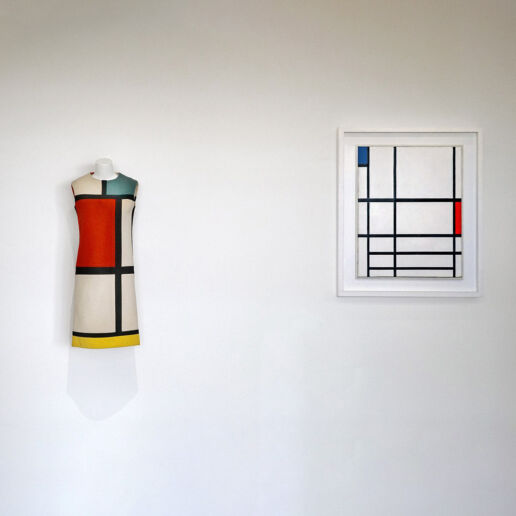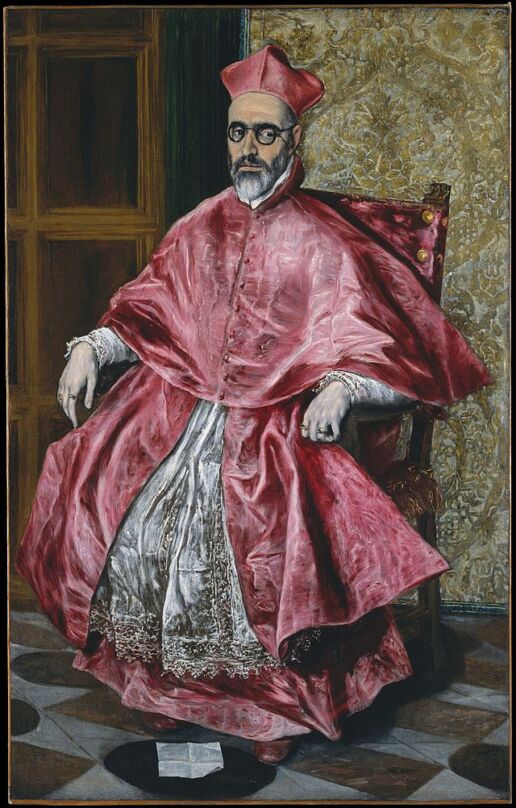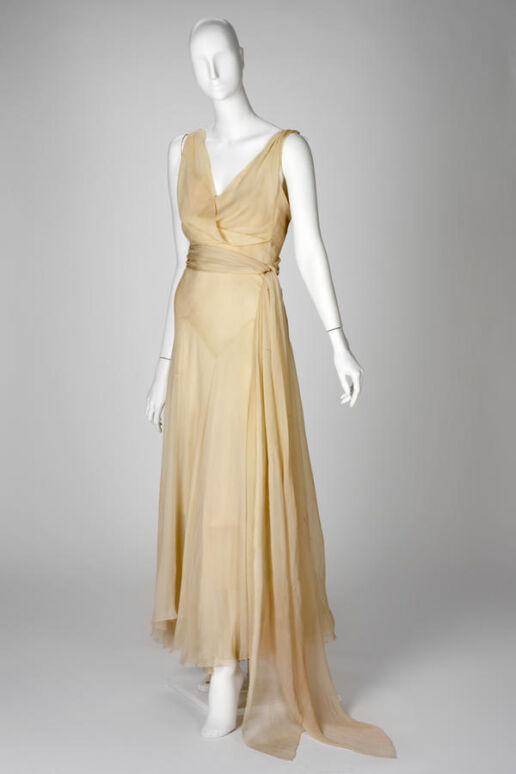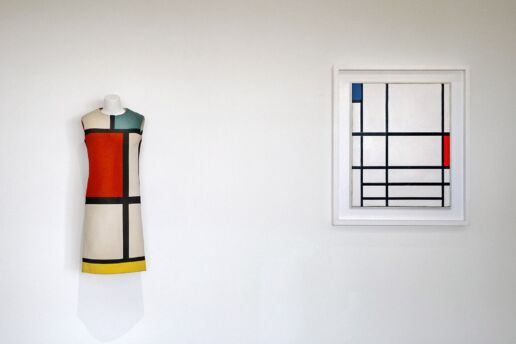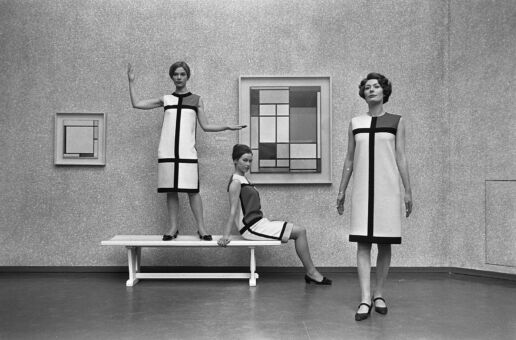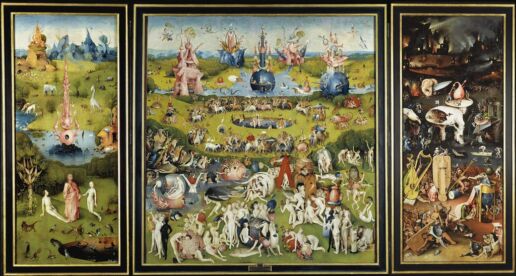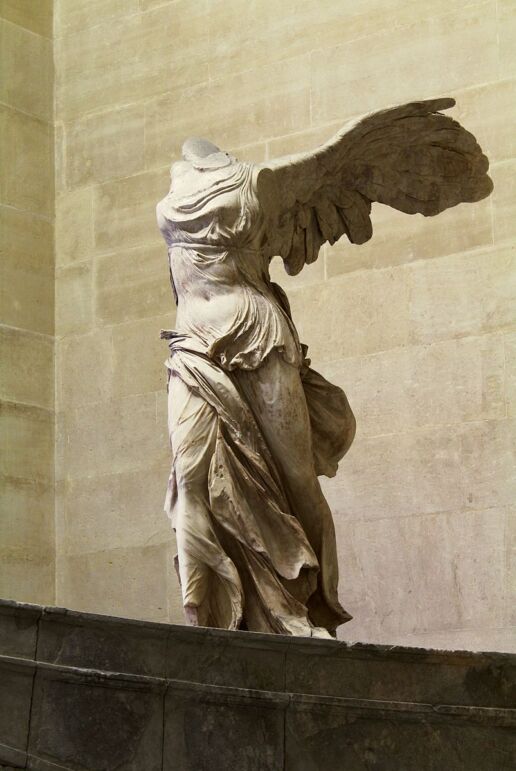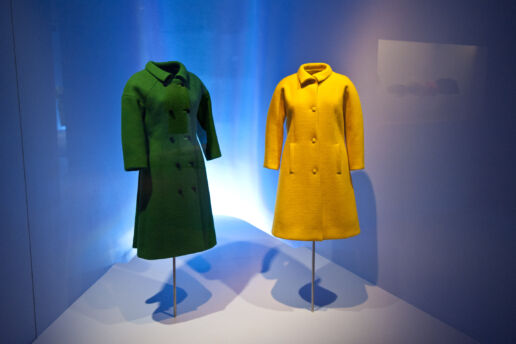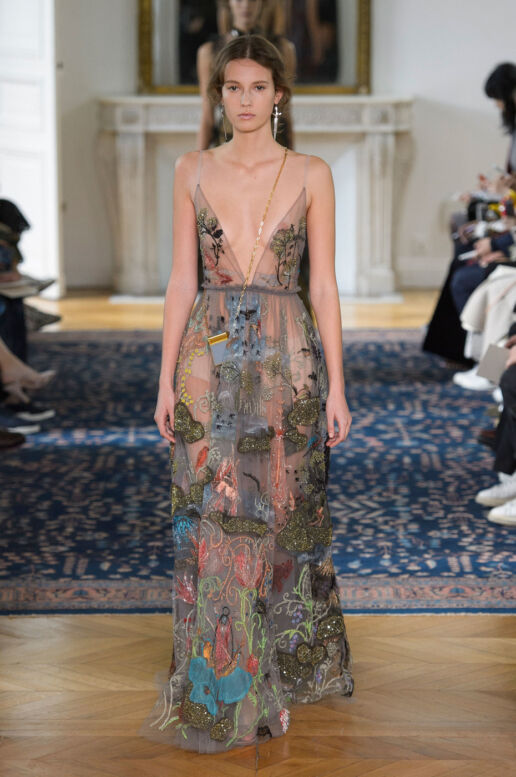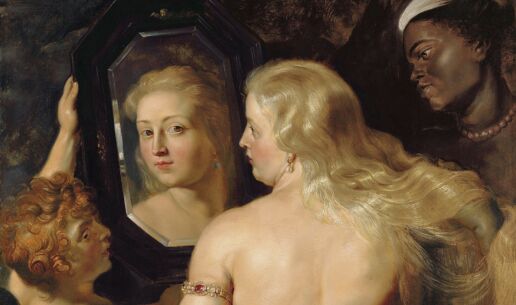THE CENTURY-OLD INTERACTION OF HIGH ART AND FASHION
We take a deep dive into the history of high fashion, examining the ways in which designers draw inspiration from art movements and iconic masterpieces from art history.
The capacity to sustain an art collection with endless curiosity while designing two haute couture collections a year… The talent to create dresses inspired by medieval symbolism yet able to command the attention of 21st-century fashion critics… The skill to reflect the elegance of Ancient Greek marble statues through silk fabrics… Or the ability to be mesmerized enough by Rubens’ Venus to turn the fashion world’s idea of beauty on its head… We invite you to discover the works of art that have surprised and inspired people while influencing our ways of seeing the world for centuries–as seen through the eyes of five genius fashion designers.
A designer who injects the spirit of Ancient Greek statues into ethereal dresses: Madeleine Vionnet
Born in Northern France in 1876, Vionnet spent much of her youth in Rome watching Ancient Greek and Roman statues–so much so that the ancient sculptors’ approach to the female body and their incredible talent in transforming marble into fabric became core elements shaping Vionnet’s outlook on fashion. Just as the sculptors worked the marble, so did Vionnet design, drape, and sew the fabrics in her atelier with flawless techniques. Through her talent, she also ushered in a revolution in the fashion scene. Looking at the Hellenistic sculpture “Winged Victory of Samothrace” at the Louvre Museum alongside Vionnet’s designs may form the ideal framework for understanding the depth of inspiration here. A tribute to the female body, Vionnet’s deeply draped, light-colored, ethereal dresses would pair flawlessly with this sculpture, which depicts the Greek goddess of victory, Nike. Vionnet also rejected the Victorian-era corsets which dominated the 1920s fashion scene–much to the discomfort of women–by bringing back the Ancient Greek “kiton.” Her collections incorporated designs in light and flowy fabrics which were tied at the waist, and they generated plenty of buzz in an era when women were fighting for their rights and comforts.
Medieval symbolism at Valentino: Pierpaolo Piccioli & Hieronymus Bosch
The Museo del Prado in Madrid is home to a piece by Dutch painter Hieronymus Bosch which is surprising and mesmerizing enough to spend hours watching. Estimated to have been created sometime between 1490 and 1500, “The Garden of Earthly Delights” is a masterpiece oil painted on oak panels. Flying in the face of medieval religiosity, this work depicts the Garden of Eden, the Garden of Earthly Delights, and Hell. Bosch’s nearly surrealistic drawings reveal humankind’s endless greed and predilection for sin. In 2017, the piece was reintroduced to the modern world with a romantic spin. The creative director of Italian fashion house Valentino, Pierpaolo Piccioli’s fascination with medieval paintings and religious imagery took center stage in the brand’s 2017 Spring-Summer collection. Working with master textile print creator Zandra Rhodes, Piccioli infused Valentino’s distinctive sheer tulle fabrics with Bosch paintings and colors. The light greens, faded pinks, and pale blues from the master painter’s palette perfectly complemented the romance of flowy velvets, tulles, and lace–once again reminding those who have their eye on fashion how art history can inspire truly unforgettable pieces.
The endless beauty of Venus: Dolce & Gabbana & Peter Paul Rubens
One of the first works that spring to mind when it comes to symbols of beauty, “Venus in Front of the Mirror” is just one of the masterpieces by Peter Paul Rubens, who ranks among the most famous painters in history. With her silky golden hair, her flawless skin proudly displayed to the viewer, and her self-assured reflection in the mirror, Venus is one of the most beautiful women depicted not just in the Baroque era but in all of history. That’s why Rubens’ works from the Baroque era–when the calm and tranquility of the Renaissance slowly gave way to an exciting and energetic elegance–are the most powerful influences on Italian fashion designers Domenico Dolce and Stefano Gabbana’s idea of beauty. The artist’s impact on the Italian duo is so big that it affects not just their chosen colors and patterns but also their choice in models, it seems. In an era when working with rail-thin models is rewarded, the pair chose to work with models who looked like the women in Rubens’ paintings. By eschewing the bony look to showcase models with rounder figures, they also became some of the first to challenge the beauty norms imposed by the fashion industry. That’s why the women shyly smiling at us from the Dolce & Gabbana 2020 Fall/Winter campaign images seemed to have stepped off a Rubens canvas with their elegant poses and the surrounding decor. For years the brand has embraced a design approach dominated by Baroque-era architectural details, embroidered fabrics that require a high degree of craftsmanship, and a pastel color palette. Inspired by many different Rubens pieces that depict the glamour of the Baroque era, the Italian fashion house has held sway over the fashion world for decades, thanks to collections that feature brocades, lace, and velvets, bold gold accessories, and sexy-strong female figures.
Balenciaga’s Renaissance: Cristobal Balenciaga & El Greco
I need to start off this section by urging you to pause if you read the title and imagined the Balenciaga designs of today. What we’ll focus on here will be Cristobal Balenciaga and his flawless designs. A genius designer of the 1950s, close friend and couturier to Audrey Hepburn, and someone Coco Chanel described as “the only couturier in the truest sense of the word,” Balenciaga was born in a small Spanish town to a seamstress mother and fisherman father–and 50 years after his passing, he is still remembered as a true tailor-couturier who revolutionized 20th-century fashion. Throughout his life, he distilled the essence of the Renaissance-era Spanish artworks that left their mark on him since childhood into contemporary designs. The designer drew inspiration from the garments of the Spanish royal family and clergy, building a career out of transforming religious and monastic garments into wearable masterpieces of fashion. One of his most significant inspirations was the Greek painter El Greco from the 1500s. A leading figure in the Mannerism movement, El Greco’s “Cardinal Fernando Niño de Guevara” features bright colors, rich and sturdy fabrics, and an intentional manipulation of proportions–all of which were brought back to life 400 years later on a runway in Paris, through Balenciaga’s designs. While the designs of the time emphasized a small waist, featured long cuffs, and had dark colors, Balenciaga designs saw them replaced with oversized tunics that had no waistlines, shorter cuffs that allowed women to show off their jewelry, and bright colors. Just as El Greco depicted the cardinal in his oil painting as a symbol of God’s might, so did Balenciaga highlight the growing strength of women at the time through the clothes he designed.
Through lines and colors: Yves Saint Laurent & Mondrian
Now, we take a look at the story of a designer whose source of inspiration is clear at first glance. He is also someone who was bold enough to present the first ready-to-wear collection at a time when French fashion houses were dominated by haute couture. He became the head designer of the House of Dior at 21, established his eponymous fashion label at 24, and went on to create countless unforgettable designs and collections until his passing at 71. Of course, we are talking about Yves Saint Laurent. Surrounded by art, music, design, and entertainment throughout the ’60s and ’70s, the designer poured all of that inspiration into clothes that would be talked about for decades. His fascination with art is evident not just in his collections of clothing but also in the collection of art he and his business partner Pierre Bergé amassed together. In fact, the book Yves Saint Laurent & Art–published by Thames & Hudson to commemorate the fashion house’s 60th year–guides the reader on an extensive journey through art history, from Manet to Jackson Pollock, Matisse to Lucio Fontana. Of all the pieces he designed as an homage to famous painters, the most notable has to be The Mondrian Dress, which was inspired by the vertical lines and colors of Piet Mondrian, who contributed greatly to the De Stijl art movement. First shown in 1965, the dress was an attempt to reflect the purity Mondrian brought to art through fashion, according to Saint Laurent. With the countless artworks he’s collected and the revolutionary outlook he brought to the world of fashion, Yves Saint Laurent is considered one of the designers who combined fashion and art in the most sincere way throughout history.


